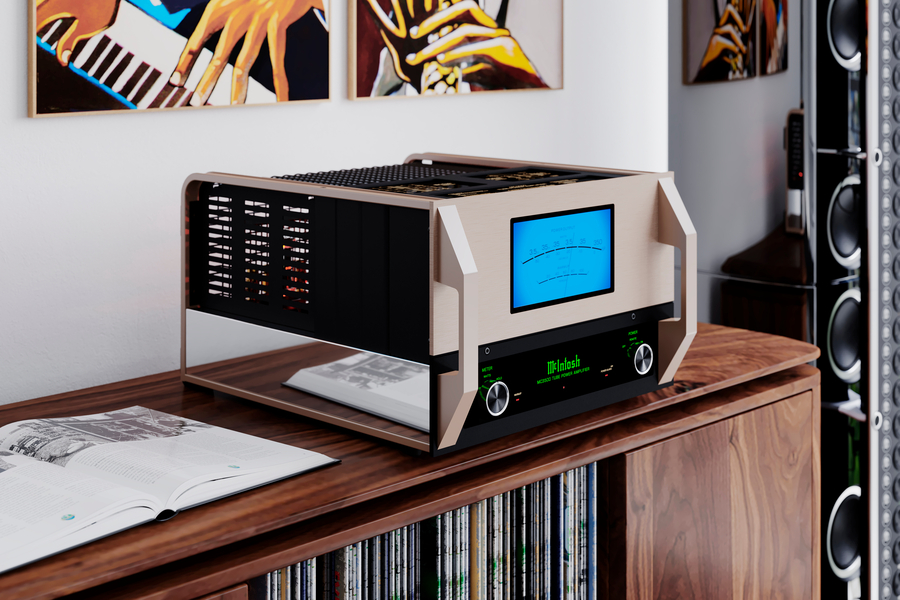How to Find the Right Speaker for Your High-End Amplifier
Even Top-of-the-Line Models Thrive With the Right Partnership

Most audiophiles know how important amplifiers are in driving their high-end speakers. They sometimes assume wrongly that any pair of high-end amplifiers and speakers will shine together. However, that’s not necessarily the case. Compatibility between models is important in getting the deep, natural sound you crave. One way to test what works best is a test-drive, which we always recommend clients do at our expansive demo space. But, before you go, it’ll help you to get a general idea of the factors that affect speaker/amplifier compatibility.
SEE MORE: Why Working With a McIntosh Dealer Elevates Your Audio Experience
What You Need to Know About Speaker Sensitivity
Let’s start with speaker sensitivity. This term describes how well a speaker converts power from an amplifier into sound, measured in decibels (dB). You’ll typically see sensitivity ratings ranging from around 80 to over 100 dB. A speaker with a higher sensitivity rating needs less power to produce the same volume as one with a lower rating.
Speakers with high sensitivity ratings should be paired with lower-powered amplifiers. That way, the softest details in the music can show through without distortion or overpowering your speakers.
The experience is profound—higher sensitivity can fill your room with rich sound, even letting you enjoy those softer tracks without missing a beat. When shopping for speakers, always check to see if the speakers' sensitivity aligns well with your amplifier’s output.
Match Your High-End Amplifier to Your Speaker’s Impedance
Now, let’s talk about impedance. Impedance is the amount of resistance a speaker offers to the electrical current coming from your amplifier, and it’s measured in ohms (Ω). Think of it as how much the speaker pushes back against the power flowing into it. The lower the impedance, the more current the speaker pulls from the amplifier. Most home audio speakers fall into 4, 6, or 8-ohm categories. To avoid putting strain on your amplifier—or leaving audio quality on the table—it’s important to match your speaker’s impedance with what your amplifier is built to handle.
Why use lower-impedance speakers? If you're using a high-quality amplifier designed to handle such loads, you’re looking at a more efficient and powerful sound experience. Take Focal speakers, for example—they come in various impedance ratings. Choose one that fits well with your amplifier’s capabilities, and you’ll be all set for crisp, clear audio that has depth and character.
An amplifier with low output impedance can drive low-impedance speakers more effectively, with better control over the speaker’s movement and improved sound accuracy. This pairing supports more precise audio reproduction, especially at higher volumes or in systems with demanding performance requirements.
Finding the Right Synergy Between Your System Components
Next up is the concept of synergy. This term refers to how well your amplifier and speakers complement each other. It’s something that can often slip under the radar, but let me tell you, it’s essential for those of us looking to truly unlock the potential of our audio gear.
If you dive into brands like Focal and Bowers & Wilkins, you’ll notice they offer incredible sound precision. Pairing speakers, known for their dynamic response and expansive soundstage, with a matching high-end McIntosh amplifier can lead to an incredible audio experience.
The best way to discover synergy? Listen for yourself! Visit our Farmington showroom or test systems at home and pay close attention to the tonal balance and how fluidly the music flows. Each combination carries its own unique sound, and only by experiencing them together can you find a setup that speaks to your audiophile heart.
Here at Natural Sound, we understand how much your audio experience means to you. Call or fill out our contact form to schedule a consultation or swing by our showroom to get started on your high-end audio journey!

